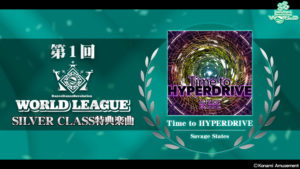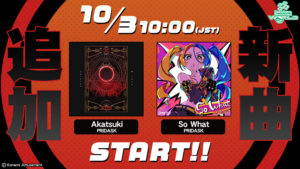

So you want to play DanceDanceRevolution, aka DDR, but you don’t know where to start. Maybe you watched someone play at the arcade or watched your friend play and were too intimidated to try it out, or perhaps you only played a song or two that one time and didn’t know what to do. If you’re a total newbie who is eager to step foot on the dance pad and learn the basics of DDR, then this is the guide for you.
CHOOSING A GAME
With how many versions of DDR were made since its inception, it can be overwhelming when it comes to choosing a game to start with. It doesn’t necessarily have to be DDR, because In The Groove aka ITG, and Pump It Up aka PIU, are also great options to start with if they are available to you. There are so many options to pick from, so we can help you narrow that decision down.
ARCADE
If you happen to be lucky enough to be close to an arcade with DDR, ITG or PIU, then congratulations! The arcade version of the games are by far the best experience you can get when it comes to gameplay and the look and feel, and it should be the version that should be prioritized over any other option where available. Metaphorically speaking, the arcade platform is the Gold Standard of each respective dance game.

The downside of going to the arcade is that you may not be able to specifically choose which version of the game to play. The most current DDR game is only available in Asia, and chances are that if you go to an arcade with DDR anywhere else, you will find DDR EXTREME to be the current running game, as it is one of the more common versions along with DDR SuperNOVA, SuperNOVA 2, and X2. It is important to differentiate the versions as they all have different features and music. EXTREME came out in 2003 and it is where many players have started and still holds up to today with its large song selection and charm. SuperNOVA was released after a three year hiatus after EXTREME with a brushed up interface and a lot of new songs. X2 is the last game to be made available in North America so far and it came with a huge overhaul in its interface, gameplay, features, and more modern music selection.
To find out if an arcade with DDR is near you, try using Zenius-I-vanisher’s Arcade Location Map.
CONSOLE
If the arcade is not an option, whether it’s too far away or you’re not yet comfortable with playing in public, the console games allow you to play DDR in the comfort of your own home. You will need a game console system that has DDR games and a compatible dance mat. The games you want to get may depend on the system you have. If you have any of the following systems, you’re in luck: PlayStation, PlayStation 2, Xbox, Xbox 360, PlayStation 3, Wii. To get the games and the dance mat, check your local used game store or shop online at Amazon or eBay.

Personally, I started with DDRMAX2 for the PlayStation 2 and that’s what got me hooked. It’s simple and easy to navigate through the UI, has an amazing music selection, and very close to being arcade-accurate. The Wii has the most up-to-date game with DDR II with a more modern music selection. I would highly recommend getting the PlayStation 2 or the Wii games to start. If you want to go old school, grab a copy of Konamix for the PlayStation to get a taste of what old DDR is like.
STEPMANIA
Like the idea of being able to play any song you want? Then StepMania is an option for you. StepMania was created as a DDR clone or a simulator for the PC in 2001. It is open source, highly customizable, and fairly easy to configure. Getting a dance pad to work with your PC may take a bit of research and work though. Once you have StepMania downloaded and installed, you will need songs as they are not included with the game. You can check out our Resources page to find out where to get step-files for StepMania.

FAMILIARIZING YOURSELF WITH THE INTERFACE
It is important to familiarize yourself with the game’s UI. You will want to spend more time playing the game instead of stumbling around through menus. Explore the game, learn how to select songs, selecting your difficulty, customizing your options, etc.


HOW TO PLAY
The concept of playing DDR is very simple. Arrows in four different directions, Up, Down, Left, and Right, scroll up the screen towards its corresponding targets. When the arrow reaches the outlined targets, that is your cue to step on the correct arrow. Each arrow is matched with the beat of the music, so listen closely! Your level of accuracy is measured by judgments listed from most to least accurate: Marvelous, Perfect, Great, Good, and Miss. The more accurate your steps are, the higher your score will be. If you miss too many notes, your life bar depletes and you will fail the song.
Tip: Do not keep your feet on the center of the stage. You can keep your feet on the arrow panels even when there aren’t any notes on the targets. This will make learning and movement much easier for you in the long run.
CHOOSING YOUR DIFFICULTY
So you’re ready to start playing. Great! Now what? You need to choose a song, but be careful. There are a few things to consider before you jump right in.

Mode and difficulty level shown top left for Player 1, top right for Player 2.
First, you will need to learn the modes of difficulty. From easiest to hardest, DDR’s modes are Beginner, Basic, Difficult, Expert, and (sometimes) Challenge. The numbered difficulty scale from easiest to hardest goes from 1 to 20 (1 to 10 pre-DDR X).
Next, you need to find out what you are already capable of doing. Maybe you’ve seen people play enough that you already have a good idea about how to play, or you could be totally fresh to the game. Start off with the easiest difficulty. I recommend the easiest numbered scale, somewhere between 1 to 3 on Beginner. Take baby steps when you are gradually increasing your difficulty as you feel more comfortable with playing easier songs. I know it’s tempting to go straight for a song that sounds great to you, but if you’re not paying attention, the song’s chart may end up being too fast or too much for you to keep up with. Picking a song with a chart that you can’t even understand is not productive and is a waste of time. Give your mind and body a chance to learn the motions before you dive into more complicated charts.
LISTEN CLOSELY TO THE MUSIC
Without getting too involved into music theory, there are a few types notes you should look out for as you’re playing. Each arrow is assigned a color that corresponds to a beat, or offbeat. A whole measure usually consists of four beats, so each beat is a quarter or 1/4th of a measure, and each quarter note is usually colored red. A 1/8th note is half the beat of a 1/4th note, hence usually being called an offbeat, and is usually colored blue. Half of that would be a 1/16th note, so half a beat of a 1/8th note, usually colored yellow. Another note to look out for are triplets, aka 1/12th notes. They usually indicate swing. It’s kind of a complicated note to explain, but putting it simply, if you divide a beat evenly into thirds, you get a triplet. Triplet notes are usually colored green (purple in In The Groove).

Paying close attention to how the notes are separated and how they go to the music will help you get better at timing when to step on the notes.
HAVE FUN!
Dancing to music is fun and gets you a great workout! You can even grab a friend and play together! Keep in mind that DDR is a game and games should be fun and enjoyable. With this guide, you should now have all the basic tools you need to explore the world of DDR. If you know someone who is interested in starting DDR, be sure to share this guide with them!



